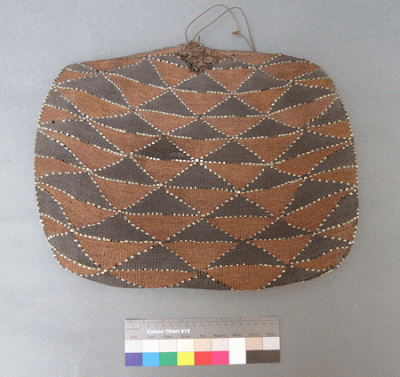 |
| 1886.1.1330 Kaki mosi kaka, Tonga |
This basket, a kaki mosi kaka, is made from dyed and undyed fibres from the coconut husk, leaf sheaths or roots (kaka). Single strands of the fibre are twined in double pairs to create a very flexible flat basket, said to have been used by chiefly ladies to carry pieces of barkcloth impregnated with scented coconut oil. The manufacture of baskets of this type ceased in the middle of the 19th century.
 |
| 1886.1.1130 Detail |
The design on the basket, of black and brown triangles, is known as manulua, two birds flying together. It is a genealogical metaphor for a high-ranking person whose parentage is equally high on both sides.
The basket is made from a single layer of fibre, and is still very flexible, However some damage has occurred around the handles. Careful handling and storage should however mean that no interventive conservation treatment is required, apart from surface cleaning.
 |
| 1886.1.1330 detail of fibre and beads (top-shell, bottom, coconut) |